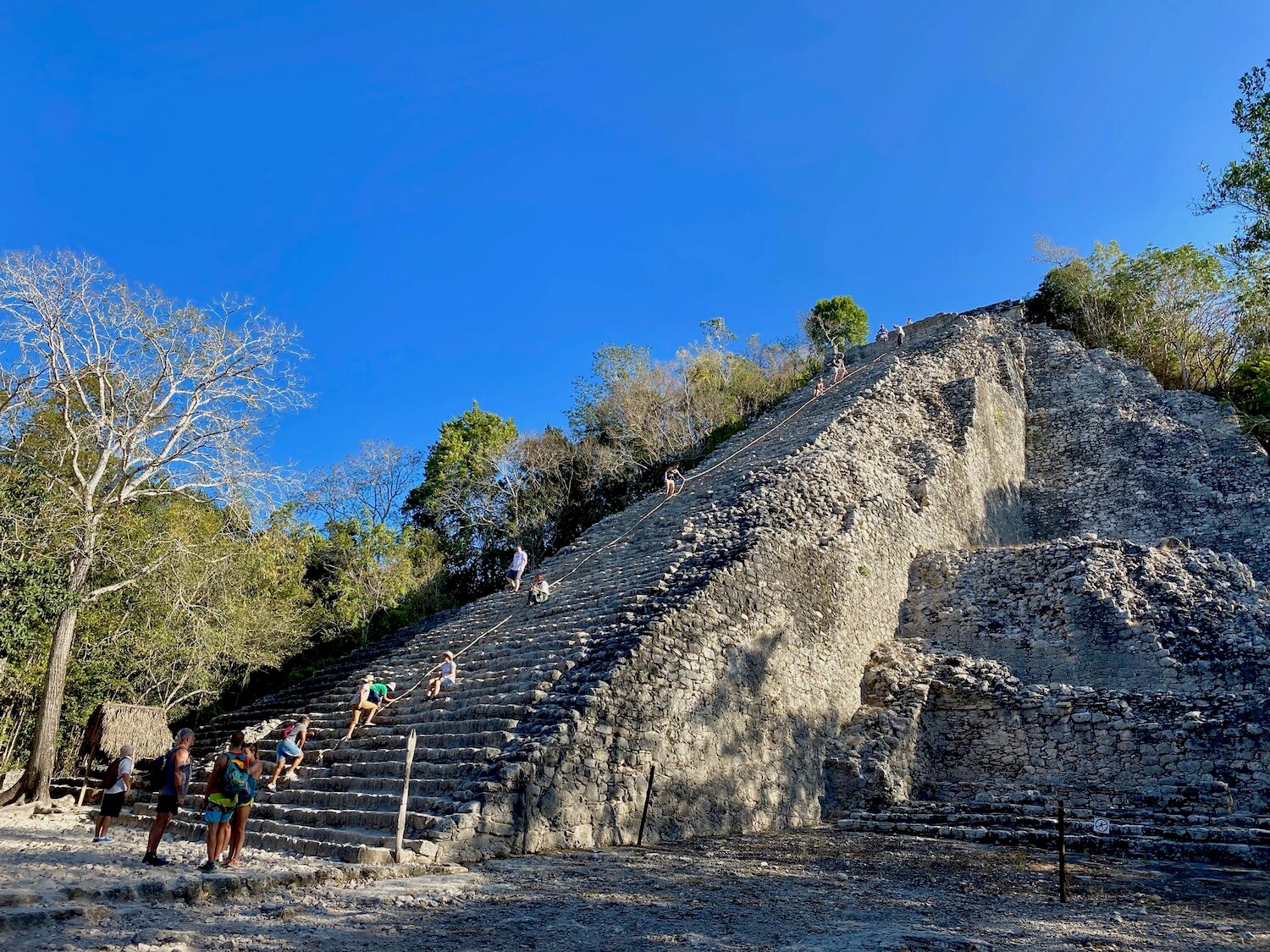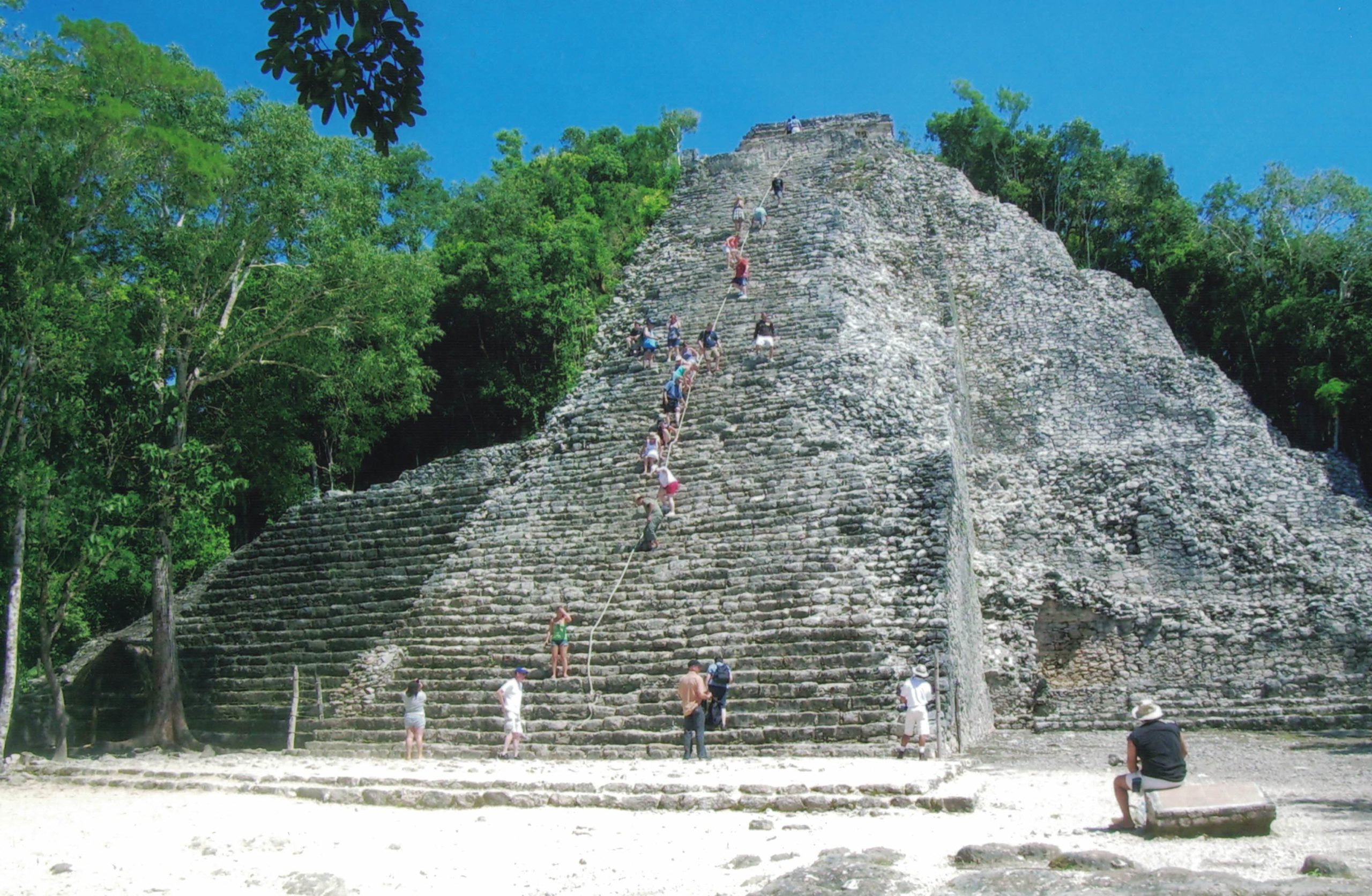The Temple of Nohoch Mul at the Cobá archaeological site in Quintana Roo, Mexico, stands as a unique relic of the ancient Mayan civilization. Towering at 42 meters, it is not only one of the tallest Mayan pyramids but also one of the few that still permits visitors to climb its ancient steps. This journey provides a direct link to the past, as the view from the top unveils a sweeping panorama of the dense Yucatán jungle—a testament to the pyramid’s original significance and its role in Mayan life.
Historical Significance and Purpose
The Temple of Nohoch Mul, constructed between 500 and 900 AD, falls within the Classic Period of Mayan civilization, a time of architectural and cultural development. Historians believe that the pyramid served as both a ceremonial center and a critical trade and communication hub. The city of Cobá, where it is located, was strategically placed, linking various other Mayan cities like Chichén Itzá and Yaxuná through raised stone roads known as sacbés.

These sacbés, some extending over 100 kilometers, were essential for trade, cultural exchange, and even military movements, underlining Cobá’s role as a prominent city. Nohoch Mul, with its impressive height, would have served as a significant landmark and a point of convergence for these paths, further solidifying its place in Mayan society.
Architectural Marvel and Mayan Craftsmanship
The construction of Nohoch Mul reflects the advanced engineering skills of the Maya. Built with a steep, pyramid-like structure characteristic of Mayan architecture, the pyramid is a study in both form and function. Each of the 120 steps was constructed with meticulously placed stone blocks, showcasing not only the labor-intensive nature of the work but also the sophistication of Mayan building techniques.

These architectural feats likely involved skilled laborers and elite architects who understood the challenges of building such a large structure in the rugged landscape of the Yucatán Peninsula. The temple’s steep incline and height underscore the Maya’s ambition to create structures that reached into the heavens, symbolizing the might and spirituality of their culture.
Cultural and Spiritual Relevance
For the ancient Maya, height often symbolized a closer connection to the gods. Climbing to the top of Nohoch Mul offers a glimpse into the spiritual lives of the Maya, where rituals at elevated sites were common. This vantage point likely served as a place for observing celestial events, as the Maya were renowned for their knowledge of astronomy. It may have also provided a sacred space for ceremonies, invoking deities and honoring the link between the Earth and the heavens.

Rituals performed at the summit could have been integral to their beliefs, marking it as a sacred site where priests, nobility, or even kings communicated with the divine, making Nohoch Mul more than just a physical structure but also a spiritual monument.
A Unique Opportunity for Visitors Today
Most Mayan pyramids, such as those at Chichén Itzá and Uxmal, are now closed to the public for climbing to preserve the structures. However, the Temple of Nohoch Mul remains an exception, allowing visitors to experience the pyramid as the Maya once might have. Ascending these steps is more than a physical journey—it is a historical and spiritual experience that connects visitors to the Maya’s legacy, offering a perspective on the landscape, culture, and beliefs of one of history’s most fascinating civilizations.

For travelers, climbing Nohoch Mul is a rare opportunity to walk in the footsteps of the ancient Maya, making it a cherished and unforgettable part of the Cobá experience.
Conclusion
The Temple of Nohoch Mul endures as an emblem of Mayan achievement in architecture, culture, and spirituality. This extraordinary pyramid in Cobá not only highlights the ingenuity of the Mayan civilization but also offers visitors today a direct and intimate connection with history. It stands as a powerful symbol of the Mayans’ reverence for the cosmos and their profound sense of place within it, ensuring its lasting significance for generations to come.

